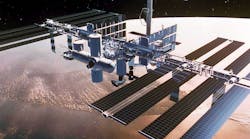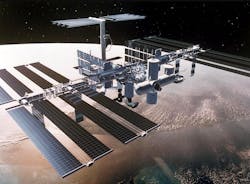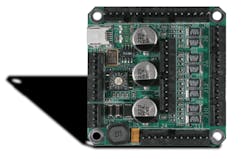Download this article as a .PDF
Aerospace companies are often intimately involved in research and development of all kinds, and Airbus is no different. As part of a current project, it is working to produce an experimental unit for the fluid science laboratory installed within the Columbus module of the International Space Station (ISS), with a focus on the study of “soft matter.” Soft matter results from the different mixtures between gases, solids, and liquids (including gels, foams, aerogel emulsions, and granulates).
The Research into Soft Matter
The idea behind this experimental unit is to support basic research of such soft matter in order to determine and fine tune the mathematical tools used to model it; this can later result in the optimization of industrial processes on the ground, as well. Currently, the experiments are focused on the study of wet foams and compact granulates under microgravity conditions. Microgravity is needed as gravity masks the dynamics of the soft matter being studied.
For the development and production of such an experimental unit, the European Space Agency (ESA) contracted Airbus to lead an industrial consortium stretching over three European countries. The Fluid Physics and External Payloads department of Airbus manages the “soft matter dynamics” project, developing this unit for the ISS. Airbus has been in charge of the technical requirements breakdown for the device, while subsequent design work was performed by their subcontractors in collaboration with Airbus.
Advanced Motion in Space
The company aimed at several key specifications, including the ability to offer as many options for the equipment as possible, easy implementation of modifications for the utmost flexibility, a short learning curve, and—most of all—a small size, which was critical for the application. For the motion control portion of the device, Airbus worked with AllMotion’s controllers and drivers to operate miniaturized stepper motors for high-accuracy of optical components in the application.
The AllMotion EZ4AXIS four-axis compact controller and driver combination is 2.25 in. by 2.25 in. by 0.6 in. (57 mm by 57 mm by 15 mm) in size. One of the design factors for the equipment was to have a small but powerful controller/driver. The unit includes built-in power drivers. The controller incorporates dual encoders as an integral part of the package for high-accuracy applications.
The original design was to allow for the rapid implementation of multi-axis stepper motor solutions in the industry. Each independent axis functions through a 1 Amp (2 Amp peak) pulse width modulation (PWM) chopper driver. Optional heat sinks are available for high-power applications, as well. The software used for the controller/driver is based on using any of the industry standard serial interfaces available today. This means that direct interaction with the product is easy to incorporate during the investigation and early prototyping phases of design.
Interfacing was also an important consideration in designing the experiment, since the final device also had to interact with other electronics units, including an experiment controller, a commercial scan state, and micro stepper motors that drive proprietary mechanical displacement devices. Key characteristics of the motors and controllers was to provide low torques at low speeds, but at very high accuracies—down to 10 micrometer step displacement and 1 micrometer position read-out—to mainly drive the optical system which included rotatable polarizers, a scan stage, and encoders for feedback.
According to the design team at Airbus, several engineers on the team have been able to integrate the controllers quickly into their workflow. Since the fluid sciences department is continually working toward providing additional devices for the ISS, it finds that working with the right components on all levels is a benefit.




